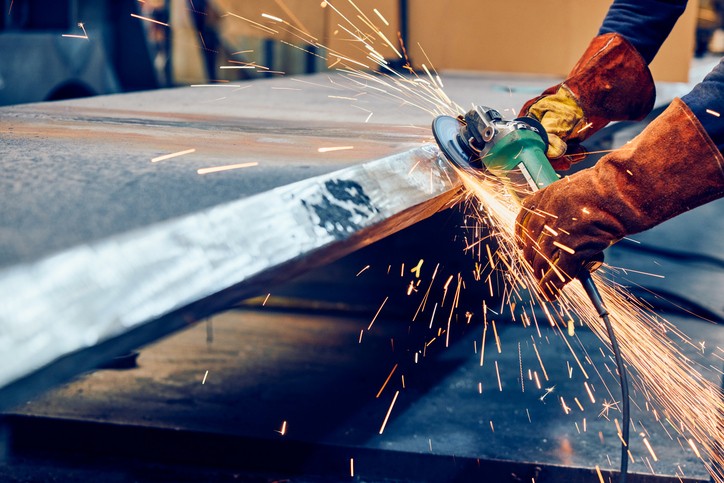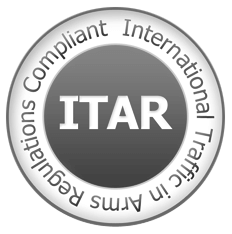Vacuum brazing is gaining popularity as a joining technique in the manufacturing, aerospace, and military space. The approach provides optimum precision and offers excellent strength. However, the effectiveness of this process primarily depends on the quality of filler metals, as it affects the joint’s performance and reliability. NAMF prides itself on being a leader in the metal manufacturing industry and can guide you in choosing the right material for vacuum brazing.
Here are important things to know about vacuum brazing applications and how to select the right filler metals for optimal results.
Understanding Vacuum Brazing
Vacuum brazing is a metal joining technique where components are heated in a vacuum chamber, and a filler metal is used to bond them without melting the base materials. The process employs the capillary action principle, to attract or draw the molten filler metal into the joint.
This technique, in turn, helps to create a strong and precise bond. By removing oxygen and other contaminants, the vacuum environment ensures a clean and oxidation-free result, making it ideal for high-precision industries such as aerospace, medical devices, and electronics.
Some perks that make this process stand out are:
- High Strength: The results of this technique are strong, durable joints capable of withstanding extreme stresses and environmental conditions. This benefit makes vacuum brazing perfect for demanding aerospace, automotive, and defense applications.
- Minimizes Oxidation: Vacuum environments reduce oxidation to give a clean and precise finish, which eases the post-brazing requirements.
- Versatility: The technique suits a range of materials, like alloys and metals.
Factors to Consider When Selecting Filler Metals
Several factors help users choose filler metals that match their precise industry needs, as follows.
Base Metal Compatibility
When manufacturing aluminum enclosures for electronics, the compatibility between filler and base metals is crucial for achieving robust bonds through vacuum brazing. Engineers must carefully evaluate thermal expansion characteristics of both materials to prevent stress fractures during the joining process. The success of vacuum brazing depends heavily on selecting filler metals that match the base material’s properties and maintain structural integrity under varying thermal conditions. This careful consideration ensures long-term reliability, particularly in applications where thermal cycling is common.
Operating Temperature Requirements
Filler metals must perform reliably within the operating temperature range of the application. High-temperature environments, such as those in aerospace engines or industrial furnaces, demand fillers with exceptional thermal stability.
For instance, nickel-based alloys maintain integrity at temperatures exceeding 1,000 °C, while silver-based alloys are better suited for applications with moderate thermal demands.
Joint Design and Clearance
Proper joint design is a critical factor influencing the capillary action required for successful brazing. Engineers must consider clearance depending on the filler metal’s flow characteristics. Geometry is another essential factor, not to forget the filler properties. Filler metals with high fluidity are advantageous for narrow gaps, ensuring complete penetration and coverage.
Strength Requirements
Precision laser cutting preparation of components ensures optimal fit-up before vacuum brazing structural elements for defense or aviation applications. When selecting filler metals for these demanding scenarios, understanding the mechanical requirements is crucial for successful vacuum brazing outcomes.
Nickel and gold alloys excel in these high-strength applications, offering superior tensile and shear strength essential for maintaining performance under dynamic loads. The controlled environment of vacuum brazing, combined with these robust filler metals, creates joints that meet the most stringent strength requirements in critical industries.
Corrosion Resistance Needs
The choice of filler metal should reflect the environmental conditions the joint will face. Corrosion resistance ensures longevity and reliability in critical applications. For example, silver-based alloys offer moderate resistance and are suitable for applications exposed to mild corrosive environments. Conversely, nickel-based fillers are ideal even in harsh environments like marine and chemical processing settings.
Common Filler Metals for Vacuum Brazing
Here are common filler metal types to choose from.
Silver-Based Alloys
Understanding the dip brazing process helps engineers appreciate why silver-based alloys excel in vacuum brazing applications for general-purpose electronics and decorative items. Their high fluidity ensures precise joints in intricate assemblies, making them ideal for complex manufacturing requirements.
When compared to salt bath brazing techniques, vacuum brazing with silver-based alloys offers superior control over joint quality and cleanliness. These alloys also exhibit moderate corrosion resistance, making them particularly suitable for non-extreme environments where maintaining joint integrity is crucial.
Nickel-Based Alloys
It’s commonly used in aerospace, automotive, and high-temperature industrial processes. Nickel is renowned for its thermal stability and corrosion resistance, these alloys provide exceptional performance in challenging environments, including prolonged exposure to heat and oxidizing agents.
Copper-Based Alloys
Copper-based metal is preferred for electrical components, plumbing systems, and HVAC equipment. Some of its perks include affordability and that it offers great thermal and electrical conductivity.
Gold-Based Alloys
High-precision equipment is best joined with gold-based alloys. The metal filler provides unmatched corrosion resistance and biocompatibility, making it indispensable in sterile and high-precision applications.
Aluminum-Based Alloys
Custom aluminum manufacturing expertise is essential when selecting filler metals for vacuum brazing aluminum components in automotive, lightweight structures, and aerospace applications. These specialized alloys create strong, lightweight joints that are critical for weight-sensitive projects, particularly when precision is paramount.
Our vacuum brazing processes, combined with advanced laser cutting aluminum capabilities, ensure optimal bond strength and consistency. These filler metals are specifically engineered to bond efficiently with aluminum base materials, providing superior joint integrity while maintaining the material’s inherent lightweight properties.
Selecting Filler Metals for Specific Applications
Every industry has unique needs. What works for one may not work well for the other, so engineers and manufacturers should be keen to select filler metals that meet their demands, as follows.
Aerospace and Aviation
This sector demands components that can withstand extreme thermal and mechanical stresses, often in highly corrosive environments. The recommended choice is nickel-based alloys, which are dominant due to their exceptional strength, heat resistance, and compatibility with high-performance alloys like titanium.
Electronics and Electrical Components
When vacuum brazing electronic components, selecting the right filler metal is crucial for ensuring both precision and conductivity. Silver-based alloys are particularly effective for components requiring EMI shielding, as they provide superior electrical conductivity in critical applications.
The controlled environment of vacuum brazing prevents oxidation and ensures consistent joint quality, particularly important when manufacturing EMI shielded enclosures. These alloys excel in vacuum brazing processes where maintaining signal integrity is paramount, making them ideal for sensitive electronic circuits and high-frequency applications.
Medical Devices
Biocompatibility and resistance to corrosion are paramount, ensuring reliability in sterile conditions. Gold-based alloys provide the necessary inert properties, ensuring long-lasting and safe joints in implants and surgical instruments.
Automotive Industry
The main requirements are lightweight yet strong joints to enhance fuel efficiency without compromising safety. Aluminum-based alloys meet these demands, offering robust bonding for aluminum components used in modern automotive designs.
Best Practices for Filler Metal Selection
Don’t settle for the first choice that comes your way. Here are helpful practices.
Consulting with Experts
Among metal fabrication companies specializing in vacuum brazing, experienced specialists can offer invaluable guidance tailored to specific applications and industry requirements. By understanding the unique challenges of each project, our expert team develops precise vacuum brazing solutions that ensure optimal joint strength and reliability.
When searching for metal fabricators in NJ and beyond, consulting professionals like NAMF help engineers identify the ideal filler metal composition and process parameters to meet stringent performance requirements.
Testing and Prototyping
Rigorous testing and prototyping ensure that selected filler metals meet real-world demands. Factors like joint strength, thermal cycling performance, and corrosion resistance can be thoroughly evaluated during this phase, minimizing the risk of failure in final applications.
Considering Industry Standards and Regulations
Compliance with standards set by organizations like the American Welding Society (AWS) guarantees that the chosen filler metals meet the highest quality and reliability benchmarks. Adherence to these standards also facilitates approval for use in regulated industries such as aerospace and defense.
The Strength of Aluminum Brazing
Aluminum brazing offers significant advantages over traditional welding in lightweight applications. Unlike welding, which often compromises the base material’s integrity, brazing preserves the material’s mechanical properties while delivering high-strength joints.
Some factors affecting the strength of aluminum brazed joints are:
- Joint design
- Filler metal selection
- Process control
Conclusion
Filler metals greatly affect the performance and durability of joints. Engineers and manufacturers must be keen to select fillers that match their industry needs, which can be achieved by checking the base metal compatibility, operating conditions, and joint design. There is also no better way to make the best choice than consulting experts during the selection process.
Partnering with experienced brazing service providers like NAMF offers the expertise and precision necessary for success in demanding industries. Their comprehensive knowledge and advanced capabilities enable clients to optimize brazing processes and achieve unparalleled performance. Contact NAMF today and learn how we can assist in optimizing your brazing projects today and ensure the reliability and efficiency your operations demand.








